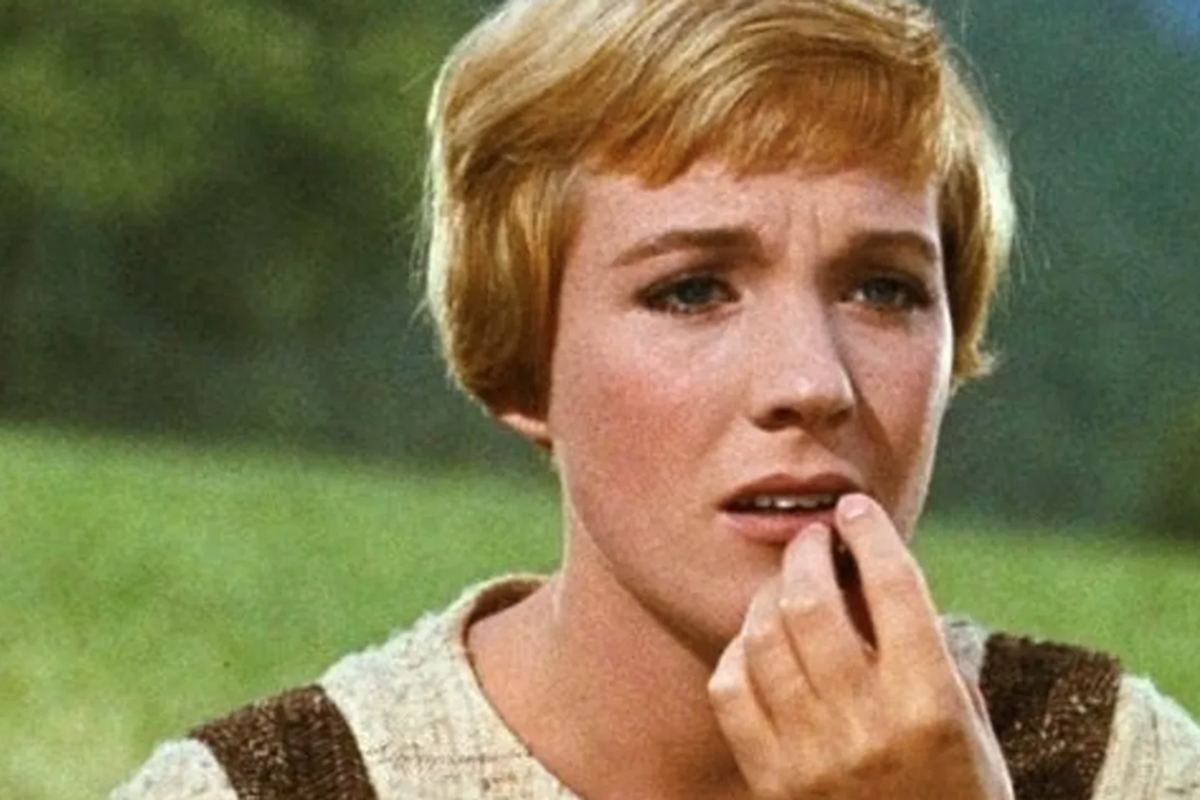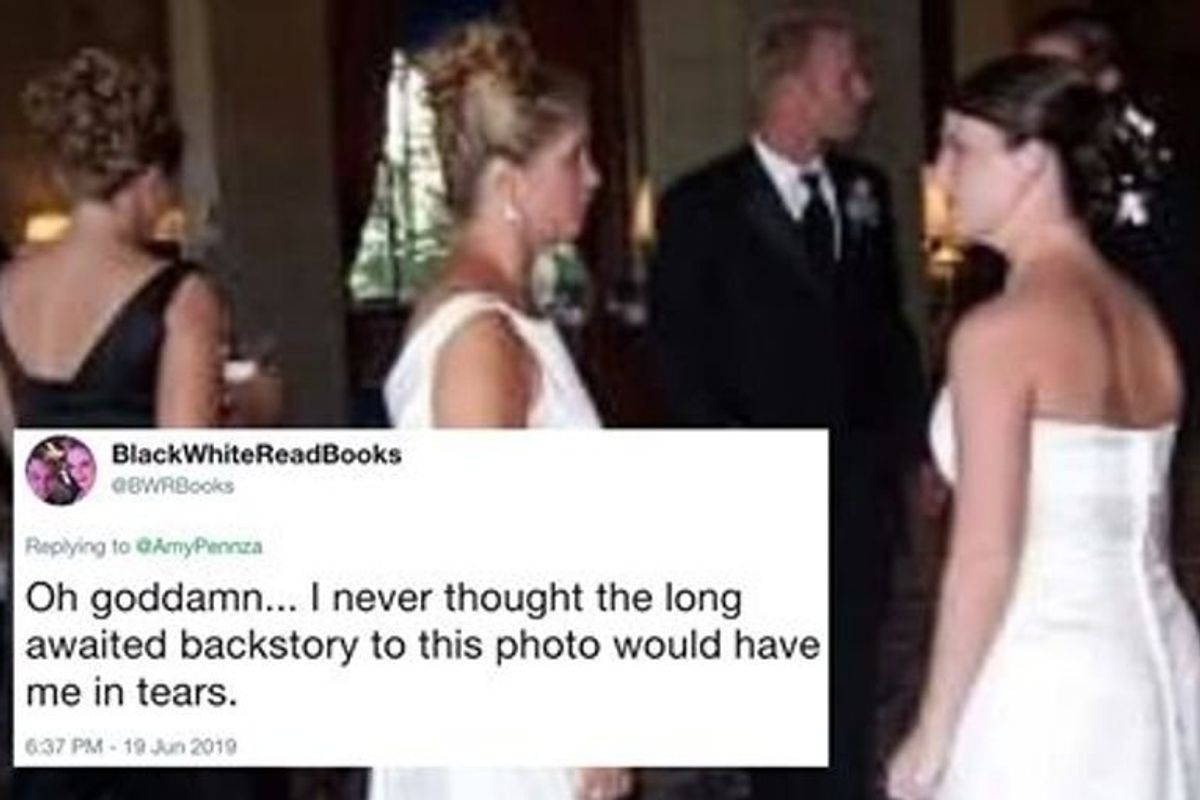A man discovered a letter his wife hid from him for 56 years. It held a life-changing secret.
"Tony, please don't be angry or surprised to hear this..."
Writing a letter is truly a lost art form, and many young people will never know the joy of it. You had to choose your words carefully and say everything you wanted to say. Once you sent it off, there was no way to be sure it was delivered. No way to know if it had been opened or read. You couldn't take it back or send it again. You just put it in the mailbox and hoped for the best. It was excruciating and magical all at the same time.
One story of a letter never delivered has captured the hearts of readers everywhere. A heart-warming local news story gone viral for the best reasons.
Tony Trapani and his wife were married for 50 years despite the heartache of being unable to have children. "She wanted children,” Trapani told Fox 17. "She couldn't have any. She tried and tried." Even though they endured the pain of infertility, Tony's love for his wife never wavered and he cherished every moment they spent together.

After his wife passed away when Tony was 81 years old, he undertook the heartbreaking task of sorting out all of her belongings. In particular was a mountain of papers stuffed into filing cabinets. Trapani diligently went through every single one.
That’s when he stumbled upon a carefully concealed letter in a filing cabinet hidden for over half a century.
The letter was addressed to Tony and dated March 1959, but this was the first time he had seen it. His wife must have opened it, read it and hid it from him. The letter came from Shirley Childress, a woman Tony had once been close with before his marriage. She reached out, reminiscing about their past and revealing a secret that would change Tony's world forever.
"Dear Tony, I bet you are surprised to hear from me after so many years. I was just thinking about you tonight like so many other nights. But I thought I would write you and find out how you are," the letter reads. "Tony, please don't be angry or surprised to hear this. I have a little boy. He is five-years- old now - grey eyes and beautiful black hair. What I am trying to say Tony is he is your son."
"Please, Tony if you can find it in your heart to forgive me, please come and see him," Shirley wrote in the letter. "Every day he asks me where is his daddy and believe me Tony I can't even answer him anymore. I would be forever grateful to you if you would just see him. ... I'll close now hoping and praying you will answer. P.S. His name is Samuel Duane."
Now, Tony faced the fact that he had a son that would be around 60 years old and he set out to find him.
For over a year, Trapani’s sister tried to track down the mysterious Samuel Duane Childress, until she finally contacted his wife, Donna.
Tony and Samuel met in January 2015 and he felt like a new dad. After meeting his father, Samuel said his mother told him she sent the letter, but Tony never responded. "Why my wife didn't tell me," said Trapani, "I don't know. She wanted children. She couldn't have any. She tried and tried."
It's easy to understand why it may have been hard for Trapani's late wife, Dolly, to pass along that sort of news. Though we'll never know what exactly must have been in her heart and mind when she hid the letter all those years ago.
"I always asked my mom, I said, 'Well what does he look like?'' Samuel said. "She said, 'Well, go look in the mirror."
The two met and caught up on a lifetime of memories with the understanding that they could never change the past. "Just to know him now is so important to me. It's going to fill that void," Samuel said.
But just to be sure, Tony took a paternity test to ensure they were father and son. Stunning everyone involved, the test came back negative. Tony was not the father.

The news upset Tony and Samuel, but they still had a unique bond. They shared a relationship with Samuel’s mother and both have been on an incredibly wild ride after Tony found the mysterious letter.
“They're keeping that bond,” Donna said. “That paper doesn't mean anything to him. That bond has been made—and we're going to move on from here.”
Tony Trapani passed away in 2017, leaving him just two short years to connect with the man he once believed to be his son. If he'd seen the letter earlier, maybe they would have had more time. But that's all in the past, and by all accounts the men treasured the time they got together, and the relationship that they did have — not the one they wished for.
This article originally appeared earlier this year. It has been updated.



 Christopher Plummer and Julie Andrews on location in Salzburg, 1964
Christopher Plummer and Julie Andrews on location in Salzburg, 1964 


 A German Shepard relaxing in grass.via
A German Shepard relaxing in grass.via  A German Shepard puppy taking a breather.via
A German Shepard puppy taking a breather.via
Original Wonder Woman Lynda Carter becomes a superhero for the LGBTQ+ community
The actress recently defended the character as a gay icon.
Once a superhero, always a superhero.
For many, Lynda Carter is the definitive live action Wonder Woman. The actress first brought the comic book heroine to life in the '70s, and even makes an iconic cameo appearance in the modern-day films starring Gal Gadot. She’s got Wonder Woman action figures made in her likeness, for crying out loud.
All that to say, I think we can feel confident in dubbing Carter a Wonder Woman expert. She’s certainly poured a lot of heart and passion into the role over the years, and fans love her for it.
To kick off Pride Month for 2022, Carter tweeted a variant Wonder Woman comic book cover created by artist Paulina Ganucheau, which was released the previous year. The cover depicts the Amazon warrior smiling while brandishing her signature golden Lasso of Truth in front of a vibrant rainbow backdrop.
The sweet moment was cut rather short after someone commented, in all caps no less, that “Wonder Woman IS NOT A SUPER HERO FOR GAYS.”
In true Wonder Woman fashion, Carter was quick with a defensive comeback.
Carter replied, “You’re right. She’s a superhero for bisexuals!”
She attached a 2016 Polygon article where Greg Rucka, a major writer for the contemporary Wonder Woman comics, confirmed that Diana is, without a doubt, canonically queer. He added that considering the entire island of Themyscira where Diana lives was filled with only other Amazons for centuries upon centuries, “it makes no logical sense otherwise.”
Objectively, even the original conception of Wonder Woman had LGBTQ+ roots. When William Moulton Marston created her in 1941, she was inspired by both his wife Elizabeth and their polyamorous partner Olivia Byrne. Their story was depicted in the 2017 film “Professor Marston and the Wonder Women,” starring Luke Evans, Rebecca Hall and Bella Heathcote.
Carter later posted: 'I didn't write Wonder Woman, but if you want to argue that she is somehow not a queer or trans icon, then you're not paying attention.”
She also shared the the importance of keeping the character a queer icon so that others can be empowered to express themselves authentically. “Every time someone comes up to me and says that WW helped them while they were closeted, it reminds me how special the role is,” she wrote.
She then posted a photo from her Wonder Woman TV show days along with the caption: “Love seeing all the love from LGBTQ+ fans today! Now here’s one I’d like to call the ‘ready to fight your homophobic relatives’ pose. Just kidding. (Or am I)?”
This was followed by encouraging others to support LGBTQ organizations such as Trans Lifeline, the Sylvia Rivera Law Project and PFLAG, which is geared specifically toward parents and families.
You know what they say … not all heroes wear capes. But they do all fight for humanity in their own way. Carter might have retired her magical tiara, but she’s still a queen.